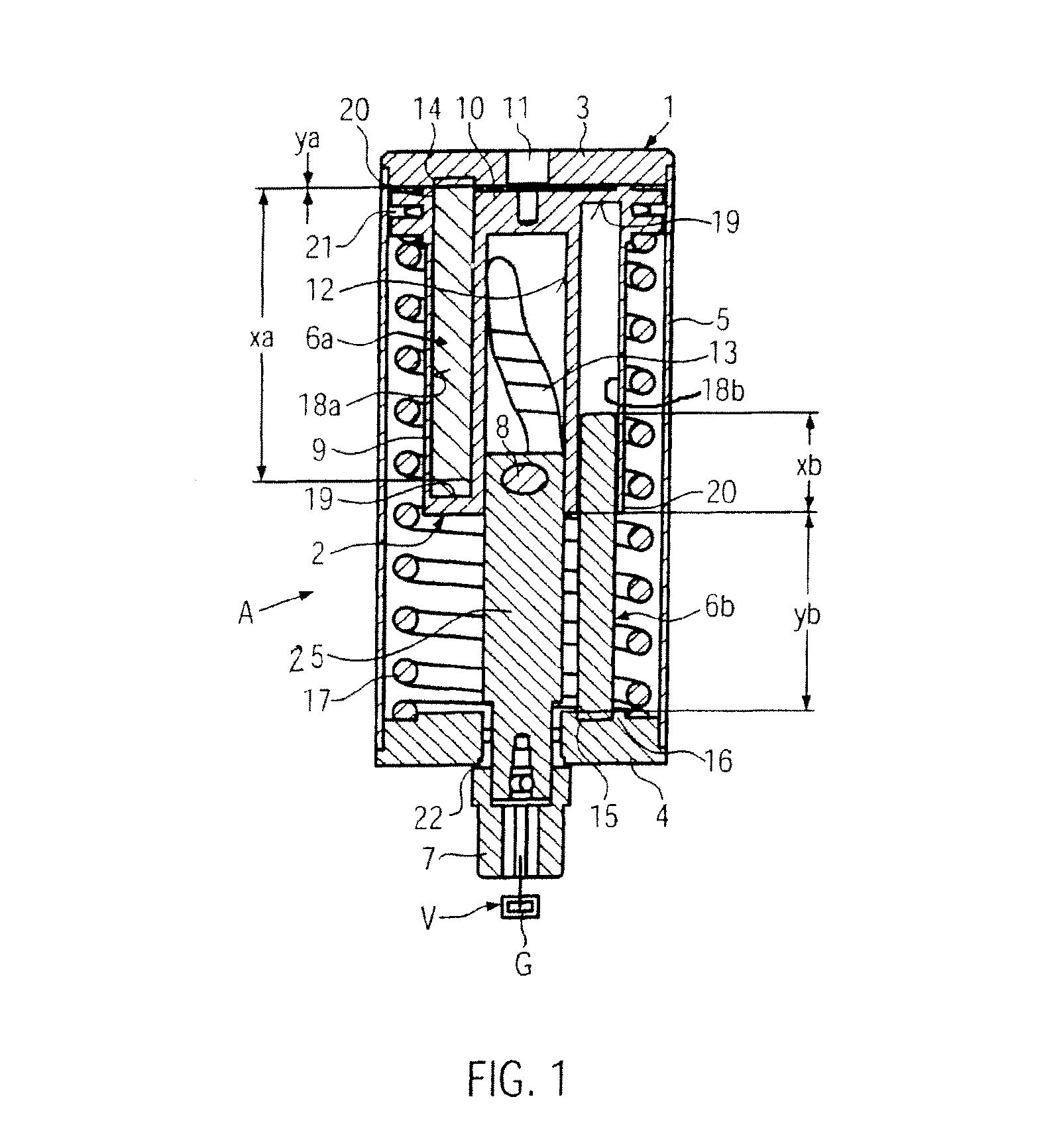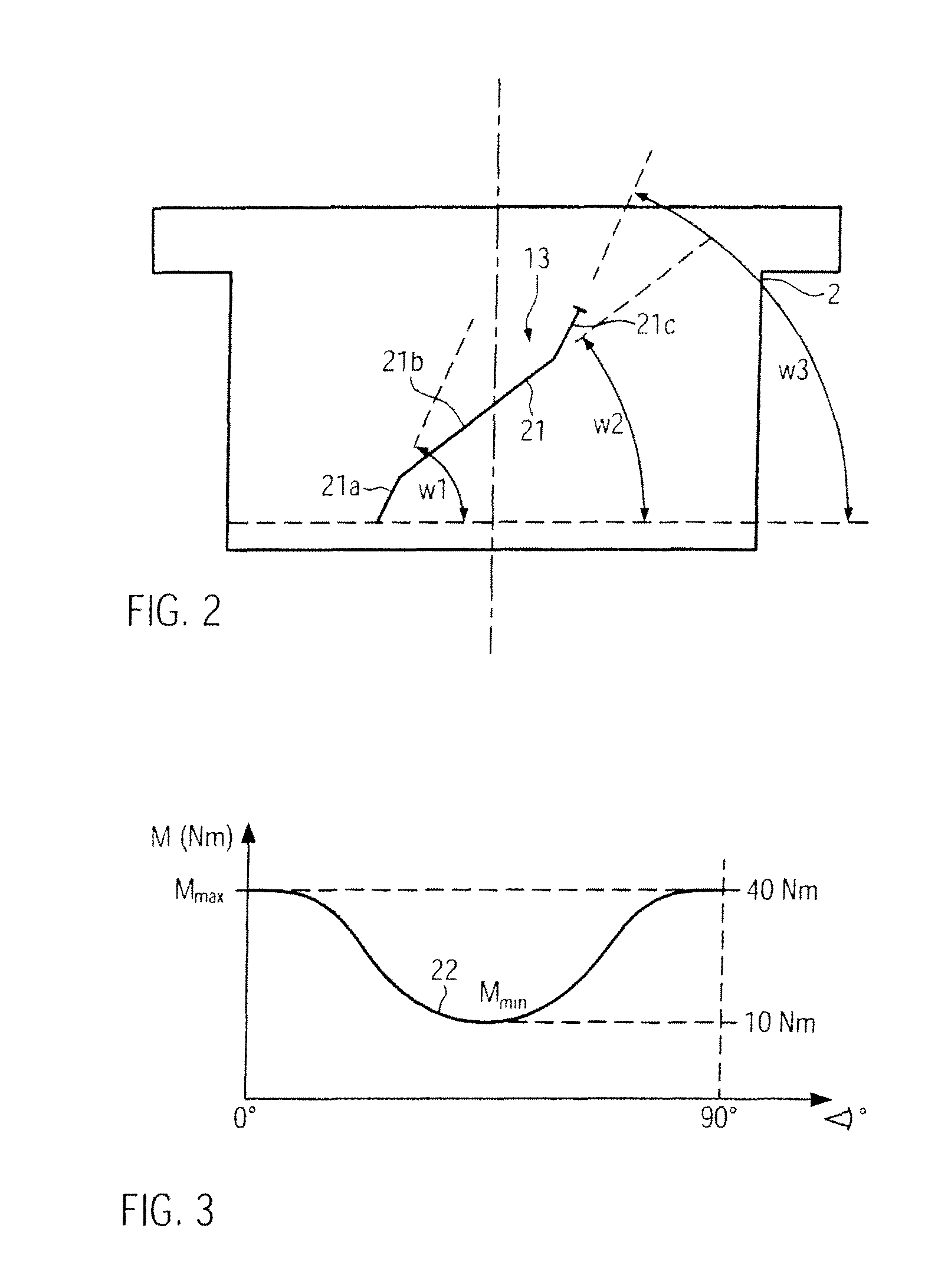Actuator for a closing element of a valve
a technology of actuator and closing element, which is applied in the direction of valve operating means/release devices, machines/engines, etc., can solve the problems of high wear risk also in the mouth region of the guide, and the number of actuator parts is inappropriately increased, and the material of the known actuator is extremely tough and expensive, so as to achieve easy manufacturability
- Summary
- Abstract
- Description
- Claims
- Application Information
AI Technical Summary
Benefits of technology
Problems solved by technology
Method used
Image
Examples
Embodiment Construction
[0026]The actuator A is used, for example, for adjusting a rotary function element G by rotation. for example a closing element of a disk valve V or a ball valve, for example in the beverage bottling industry, w here the function element G requires a certain torque and progression of the torque for rotary adjustment by a certain angle of rotation (e.g. 90°) which the actuator A produces and applies. The required switching torque can be a maximum for example during the movement of the function element G into or out of an end position. In the embodiment in FIG. 1, the actuator is operated by a pressure means, for example by means of compressed air, and this in a direction of stroke against a readjusting spring, however, it could also be subjected to the pressure means from both sides, or be driven by another drive element that produces a linear motion, and generates the rotary motion for the function element G from the linear drive motion. During the actuation of the actuator A in a d...
PUM
 Login to View More
Login to View More Abstract
Description
Claims
Application Information
 Login to View More
Login to View More - R&D
- Intellectual Property
- Life Sciences
- Materials
- Tech Scout
- Unparalleled Data Quality
- Higher Quality Content
- 60% Fewer Hallucinations
Browse by: Latest US Patents, China's latest patents, Technical Efficacy Thesaurus, Application Domain, Technology Topic, Popular Technical Reports.
© 2025 PatSnap. All rights reserved.Legal|Privacy policy|Modern Slavery Act Transparency Statement|Sitemap|About US| Contact US: help@patsnap.com



